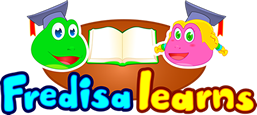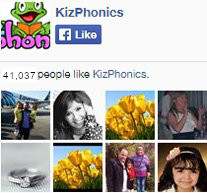Phonics Education for Learners with Disabilities: A Deep Dive into Dyslexia and Autism
In the realm of childhood education, understanding the unique needs and challenges faced by children with disabilities is of utmost importance. With about learning disabilities becoming more acknowledged, we recognize the importance of adapting teaching methodologies to cater to each child's unique learning journey. Phonics, the bridge between letters and sounds, plays a pivotal role for children, especially those with conditions like dyslexia and autism. This article will explore the signs of these disabilities and how phonics can be instrumental for these learners.
Understanding Dyslexia
Dyslexia is a common learning difficulty that affects an individual's ability to read and spell. Contrary to misconception, it does not reflect a person's intelligence.
Symptoms for Dyslexia
Recognizing the symptoms dyslexia presents is the first step to tailored education. Some of the signs include:
Struggling with phonological awareness.
Difficulties in recognizing the sounds that letters or groups of letters make.
Trouble with word retrieval or naming things.
If you're wondering what is dyslexia symptoms, it's crucial to note that they can differ from one child to another. Early intervention often leads to better outcomes.
Delving into Autism
Autism, or Autism Spectrum Disorder (ASD), affects social interaction, communication, and behavior. A term you might come across is highly functional autism, referring to individuals who may not display severe symptoms but still experience challenges.
Recognizing Autism: The Early Signs
Autism has a spectrum of symptoms, but the early signs of autism can be pivotal for intervention:
Earliest autism signs: These often revolve around social challenges. An infant might avoid eye contact, not respond to their name, or seem oblivious to the feelings of others.
How early autism signs manifest: By the age of two, some children might show intense focus on a particular subject, repeat the same actions, or strongly prefer routines.
It's essential to realize that when pondering how early are signs of autism, there is no strict timeline. Each child's development is unique.
Phonics Study for Learners with Dyslexia and Autism
Learners with dyslexia and autism often benefit from structured and multisensory phonics programs. These methods play to their strengths and offer additional support where needed.
Visual Aids: Visual supports, like flashcards or interactive games, can be found on platforms like Kizphonics. These tools assist in reinforcing the connection between letters and sounds.
Repetition and Routine: Both learners with dyslexia and autism early signs benefit from repeated exposure and practice.
Tailored Techniques: Activities that engage multiple senses can be particularly effective. For instance, tracing letters in sand or using textured letters can be helpful.
Facts and FAQs on Dyslexia and Autism in Phonics Education
Can a child with dyslexia learn to read fluently?
Yes, with the right interventions and techniques tailored to their learning style, many dyslexic children can become proficient readers.
How do autism and dyslexia affect learning?
While symptoms for dyslexia primarily affect reading and spelling, autism can influence social interaction, behavior, and communication. Both conditions can impact a child's confidence and self-esteem in a learning environment.
Is early intervention beneficial?
Absolutely. Recognizing the earliest autism signs or symptoms of dyslexia and starting intervention can lead to more successful learning outcomes.
Conclusion: Embracing Unique Learning Journeys
Every child, regardless of the challenges they face, has the potential to thrive in the right learning environment. As educators, parents, and caregivers, understanding conditions like dyslexia and autism is the first step in creating a nurturing, effective educational setting. Phonics education, tailored to the unique needs of these learners, can open doors to the world of reading and beyond.










